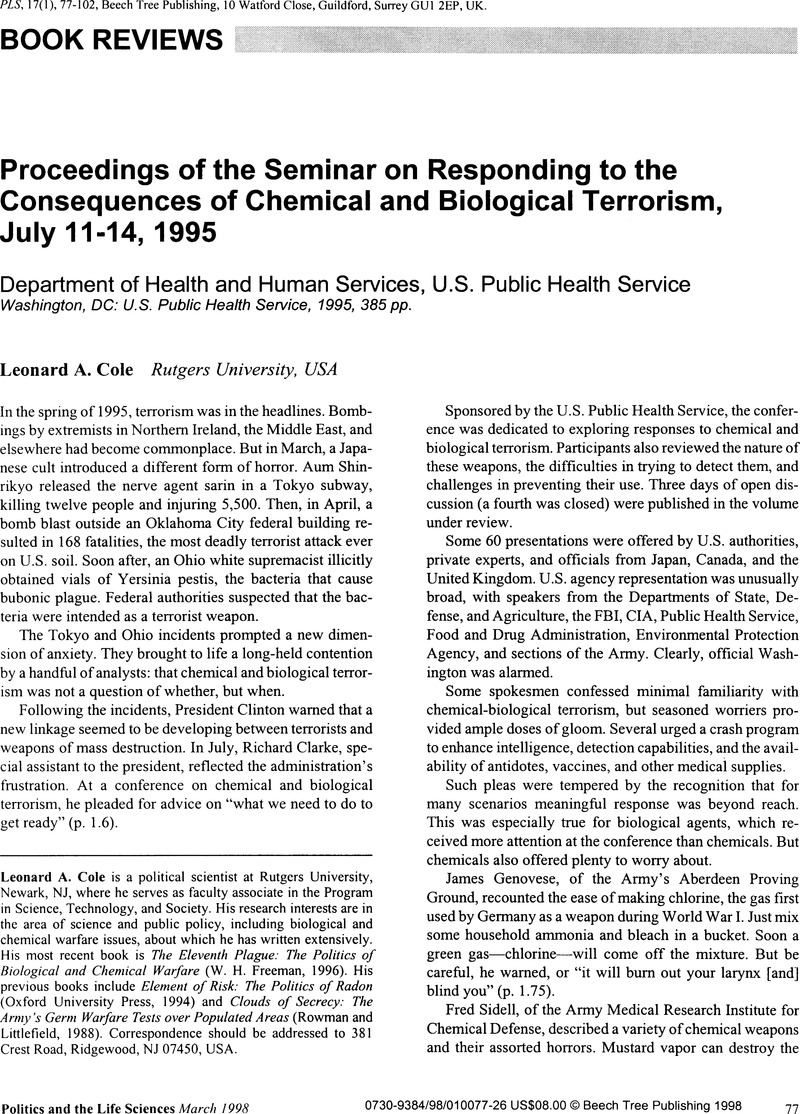No CrossRef data available.
Article contents
Proceedings of the Seminar on Responding to the Consequences of Chemical and Biological Terrorism, July 11–14, 1995.Department of Health and Human Services, U.S. Public Health ServiceWashington, DC: U.S. Public Health Service, 1995, 385 pp.
Published online by Cambridge University Press: 17 May 2016
Abstract
An abstract is not available for this content so a preview has been provided. Please use the Get access link above for information on how to access this content.

- Type
- Book Reviews
- Information
- Copyright
- Copyright © Association for Politics and the Life Sciences
References
Cole, L.A. (1996). The Eleventh Plague: The Politics of Biological and Chemical Warfare. New York: W.H. Freeman.Google Scholar
Mandelbaum, M. (1981). The Nuclear Revolution: International Politics before and after Hiroshima. New York: Cambridge University Press.Google Scholar
Perry Robinson, J.P. (1993). “Origins of the Chemical Weapons Convention.” In Morel, B. and Olson, K. (eds.), Shadows and Substance: The Chemical Weapons Convention. Boulder, CO: Westview.Google Scholar
Purver, R. (1995). Chemical and Biological Terrorism: The Threat According to the Open Literature. Ottawa: Canadian Security Intelligence Service.Google Scholar
van Courtland Moon, J.E. (1993). “Controlling Chemical and Biological Weapons through World War II.” In Burns, R.D. (ed.), Encyclopedia of Arms Control and Disarmament. Vol. 1. New York: Scribner's.Google Scholar




